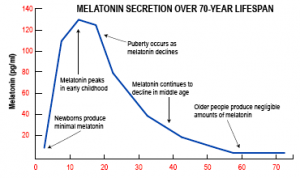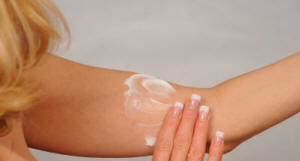There is new research showing that electronics in the bedroom can interfere with a normal sleep pattern. Dr. Ben Carter is the lead author and a senior lecturer in biostatistics at King’s College London. He just completed a study involving 125,198 children with an average age of 14½ years. There were about equal amounts of males and females. Both sexes had the same problem. When they were allowed to use electronic media, this interfered with their sleep time. What electronic devices are we talking about? Watching TV, using the computer, the cell phone, tablets and computer games. The study was originally published at JAMA Pediatrics.
Result of the study on electronics in the bedroom
- When media bedtime use was allowed, there was a 2.17-fold higher risk of not getting enough sleep quantity. This was compared to kids who did not use media devices in the bedroom.
- There was a 1.46-fold risk of having poor sleep quality.
- There was a 2.72-fold risk of excessive daytime sleepiness.
- Even children who had access to media use, but did not use it at night had similar findings. They had a risk of 1.79-fold to get inadequate sleep quantity. There was a 1.53-fold risk of poor sleep quality. And excessive daytime sleepiness was present with a 2.27-fold risk.
Melatonin level influenced by electronics in the bedroom
Physicians researched the diurnal hormone rhythm and sleep pattern for decades. Essentially two hormones work together.
In the morning when you open your eyes, light enters our eyes and is registered in the hypothalamus. There are also links from the hypothalamus to the pineal gland, where melatonin is synthesized and stored. The light signal stops the secretion of melatonin from the pineal gland, although it is still being produced during the day in the pineal gland, but stored there until the evening hours set in. You may have noticed that you start yawning when the light dims in the evening. That’s when melatonin is released into your system to let you know it’s time to slow down and go to sleep.
Balance of melatonin and cortisol
Of course, we have electrical light and can turn night into day if we choose to! This works for a limited time, but eventually tiredness sets in, and melatonin wins the upper hand. Melatonin is the master hormone of the circadian rhythm.
It is interesting to note that cortisol does exactly the opposite. Cortisol is the adrenal gland hormone that helps us cope with stress. When we are fully awake, we need cortisol to cope with the various stress situations of the day. Melatonin inhibits cortisol secretion and cortisol inhibits melatonin secretion, and they are natural opponents working together for your common good. This is part of the circadian rhythm. We can measure these hormones, and this is how researchers have found out how these two hormones work together.
What light stimulation does to your hormones
Too much exposure of children or adults to electronic devices overstimulates the brain and sends signals to the adrenal glands to produce more cortisol. In between the hypothalamus and the adrenal glands a cascade of hormones regulates this. The hypothalamus sends CRH, the corticotropin-releasing hormone to the pituitary, which stimulates in turn the release of the messenger hormone ACTH to produce more cortisol in the adrenal glands. It is the extra cortisol that keeps kids awake. The same applies to adults who invite electronics into their bedroom. All the excitement from watching the various media gadgets leads to extra cortisol. And we just learnt that cortisol counteracts melatonin.
What can parents do about electronics in the bedroom?
First of all, parents need to be firm with their kids. They need to explain to them that electronics are staying out of the bedroom. There needs to be a cooling down period one hour before bedtime where they do not watch TV, use the cell phone or other electronic gadgets. They may rebel against this first, but when they sleep better, they likely will be more agreeable. Here is a list that contributes to better sleep habits and better sleep quality:
List for better sleep habits
- Ensure that the bedroom is dark, soundproof, and comfortable with the room temperature being not too warm. It is important to develop a “sleep hygiene”. This means going to sleep around the same time each night, to have some down time of 1 hour or so before going to bed and get up after the average time of sleep (for most people between 7 to 9 hours). Sleeping in is not a solution, and an alarm clock will help also to develop a sleep routine.
- Caffeine drinks, alcohol, nicotine and recreational drugs must be avoided. Smokers should butt out no later 7PM, as nicotine is a stimulant.
- Getting into a regular exercise program, either at home or at a gym is beneficial.
- Avoid a heavy meal late at night. A light snack including some warm milk would be OK.
More points for the better sleep habit list
- It is not a sensible idea to use the bedroom as an office, reading place or media center. It paves the way to the stimulus of the cortisol effect that keeps us awake. The bedroom is a place of rest and should be comfortable and relaxing.
- Some sleepers wake up at night, and they are wide-awake! Leaving the bedroom and relaxing in the living room for a while can help. It goes without saying that playing video games will not help! An alternative is to take 3 mg of melatonin, which will helps to fall asleep faster, but melatonin will wear off after about 4 hours.
- A self-hypnosis recording is a useful adjunct to a sleep routine. Listening to it before going to sleep helps to focus on relaxation and to stop ruminating about the day and its events. Keep the volume low.
Some thoughts about sleep aids after electronics in the bedroom are removed
Sometimes an adolescent will have trouble falling asleep. Here is the solution of what to do: at the time the youngster is having problems sleeping, there is too much cortisol on board, which prevents the pineal gland to release melatonin. What is missing is melatonin.
The first step is to take 3mg of melatonin at bedtime. It takes 20 to 30 minutes for melatonin to take effect. If the youth does not fall asleep within that time frame he or she is likely thinking too much. If that were the case, I would recommend taking 1 or 2 capsules of valerian root (500 mg strength) from the health food store. This combined with the melatonin should help in more than 80%-90% of insomnia cases. If the child still cannot sleep, see your physician. The adolescent may need sleep studies done or may have problems with the thyroid (hypo- or hyperthyroidism), which may need to be checked. Physicians need to check out other medical problems, including depression. Melatonin and valerian are safe. Other sleeping pills have multiple side effects including memory problems.
Conclusion
A new study has shown that electronics in the bedroom will often keep children awake. It has become a huge problem in schools where students fall asleep or have problems paying attention. There are simple rules regarding a quiet bedroom without electronics that will go a long way of rehabilitating a child who has sleeping problems because of electronics. There are natural ways to help nature along, if the simple measures don’t work. Melatonin and valerian root help to calm the mind and help catching some healthy sleep. If the problem were persisting, an appointment with the family physician would be in order.
Even though this article deals with children and adolescents and the use of electronics in the bedroom, the same applies to adults. They are not immune to the stressors that disrupt sleep. They are just as likely to feel tired and sluggish after a restless sleep, and their performance at the workplace will suffer. Sleep hygiene is as important for adults as it is for adolescents.








